How To Know If Your Dog Is Overweight

It can be hard to resist a dogs' big puppy eyes when they're begging for a few extra treats. While an occasional extra treat is fine, a sedentary lifestyle combined with overfeeding can lead to serious health problems for your dog.
A survey conducted by Association for Pet Obesity in 2018 revealed some concerning results. 55.8% of dogs in the United States are considered obese or overweight. Some people might find a dog with a little extra weight to be cute, but a chubby canine won't get the best out of life if their own life is cut short due to health problems.
According to Royal Society for the Prevention of the Cruelty to Animals, there are several risk factors that can contribute to an overweight pet. These factors include, but are not limited to:
-
Breed: Some breeds are more likely to gain weight and hold onto the weight.
-
Age: As a dog grows older, the risk for being overweight increases.
-
Neuter Status: Neutered dogs are more at risk.
-
Owners: Owners with a sedentary lifestyle are likely to have sedentary dogs.
If your dog is packing on some extra pounds, hope is not lost. There are several ways to help your dog lose weight and return to a healthy weight range.
CHECK YOUR DOG'S BODY
Examine your dog's body shape. Yes, it's as simple as it sounds. To do this, stand over your dog so that your legs are on each side of your dog. Now look down at your dog's back. If her back is round, oval-shaped, or if you're unable to see her hips, this is a good indication of too many treats and not enough trips to the dog park. Another way to tell is by running your hands down the sides of your dog's body. You should be able to easily feel your dog's ribs. If not, this is another sign that your dog may be overweight.
When examining your dog from the side or profile view, look for a waist that is slightly raised. If your dog is at their ideal weight, their stomach should not hang down. Instead, it should raise up slightly until you get to their pelvis.
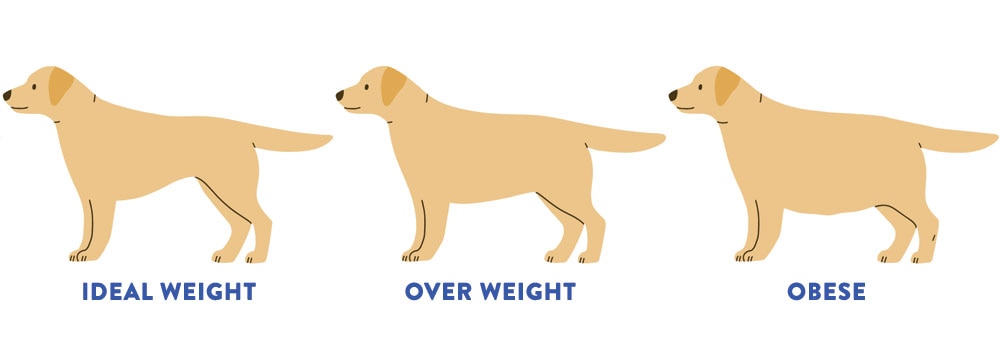
WEIGH YOUR DOG
After you've checked your dog's body and determined if she is overweight, it's best to schedule a check up with the vet. At check ups, your vet will usually weigh your pet. Most vets will refer to a body chart to "score" your dog's weight. Charts can range in value, often on scales of one to five or one to ten, with one being underweight and the highest value indicating obesity. Ideally, a dog should be in the middle of the chart. Your vet will use this chart to determine if and which type of treatment is needed.
HEALTH PROBLEMS
It can be easy to write off a few extra treats, but consistently overfeeding and not enough exercise can significantly compromise your dog's health. A few health problems that can be caused by excess weight include:
-
Heart problems
-
Certain types of cancer
-
Breathing problems
-
Joint problems
-
Canine arthritis
-
Diabetes
-
Mobility issues
DEVELOP A PLAN
The first step in making a change is identifying the problem. After determining if your dog is overweight, call your vet for further guidance. Vets can provide tips for portion control, diet, feeding schedules, and exercise.
GET MOVING!
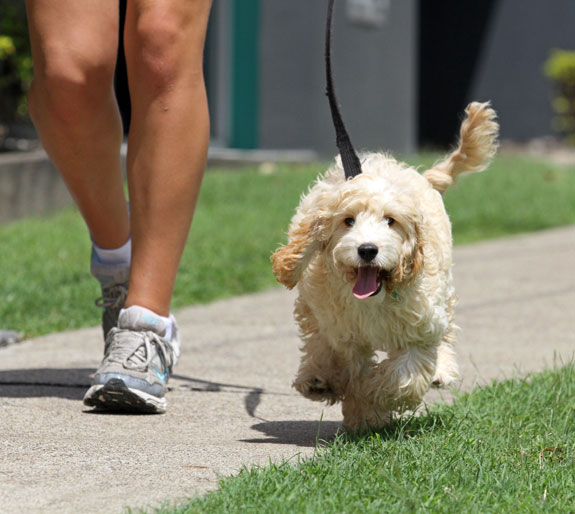
There are so many ways to get your dog moving!
Some common examples include playing fetch with your dog, taking them to the beach for a swim, or going on gentle hikes. During the first couple of outings, you may have to encourage your dog into exercise. Like humans, dogs grow accustomed to their lifestyle, and if working out isn't apart of it, it's going to take patience and encouragement. If your dog is having a hard time getting motivated, try the reward system. But skip the treats! Instead try petting your dog and telling him he's a good boy! This positive reinforcement will help your dog grow to enjoy exercise.
Remember, Rhome wasn't built overnight. Do not overdo it the first few times you exercise your dog. Like humans, your dog will need to get used to working out and the strain it may cause on his body. Your dog will be sore and may sleep longer after work out sessions. But overtime, your dog will build up his stamina and you'll be the one trying to keep up.
It's important to remember that different dogs are going to need different amounts of exercise depending on age and breed. For example, a Husky is going to need more intense exercise than a Chihuahua. In order to determine the amount and intensity of exercise appropriate for your dog, consult your vet.
CONCLUSION
Just like humans, dogs can suffer with their ideal weight too. Too many treats and not enough exercise can lead to an overweight dog. However, don't lose hope. Consult your veterinarian and come up with a plan to get your dog's weight back on track. With some exercise and diet, your dog will be at their ideal weight in no time!
Previous article

Next article
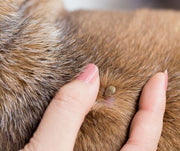
Related posts
View all-
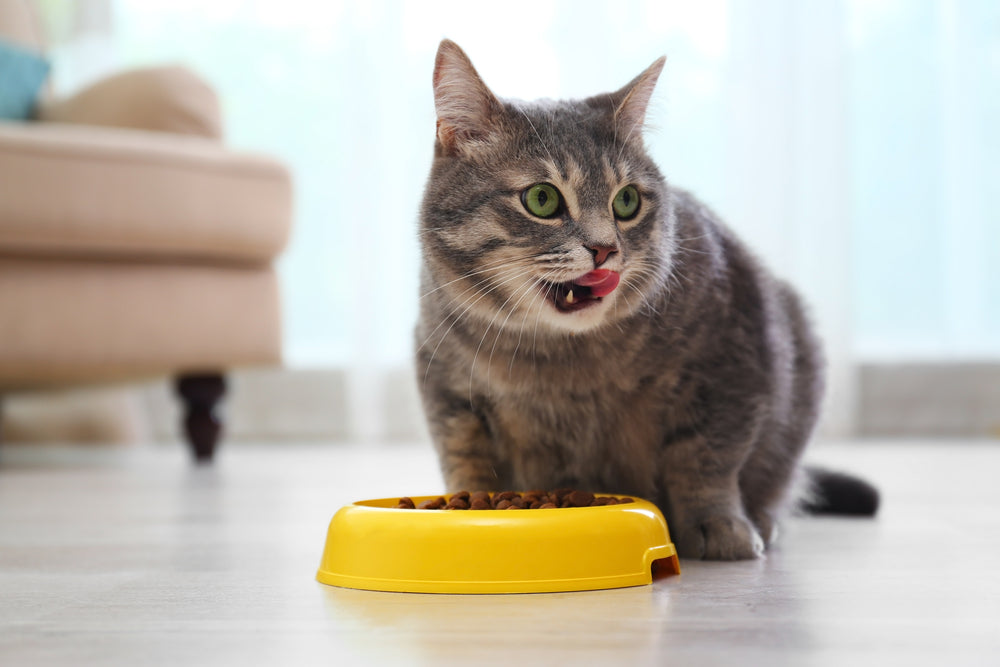
Wet Vs. Dry Cat Food: Which is Better?
As a caring cat owner, you always want the best for your furry friend, especially with their food. You typically have two choices: dry cat food in a bag or canned wet food. Whether you've just brought home a new kitty or are looking to transition to a new food, the decision process can be overwhelming, and understanding the impact of each on your cat's diet is essential. Read Article -
Celebrate National Pet Week: Fun Ideas to Celebrate with Your Pet
National Pet Week is right around the corner, so it's time to plan how you're going to celebrate! While we're sure you celebrate your pet all day every day... Read Article -

5 Simple Tips to Make Sure Your Cat Drinks Enough Water
Ensuring your cat stays hydrated is important, but it can be challenging since many cats don't drink enough water. Dehydration can lead to kidney disease and other health issues. Fortunately, you can encourage your cat to drink more with a few simple changes. Read Article



